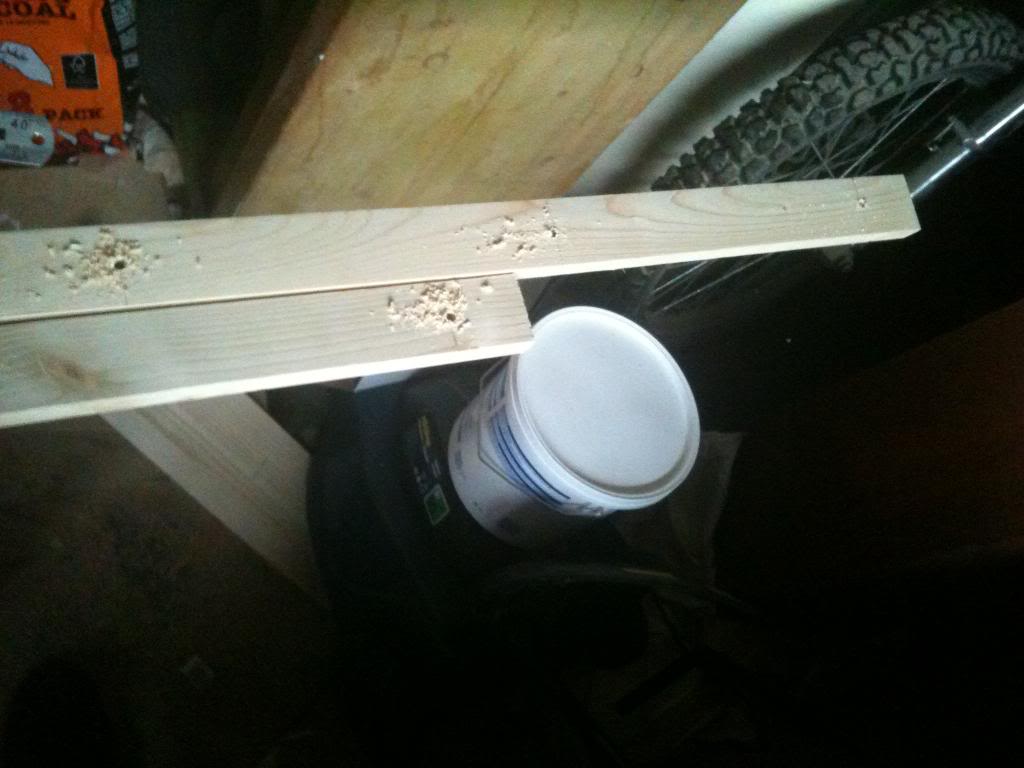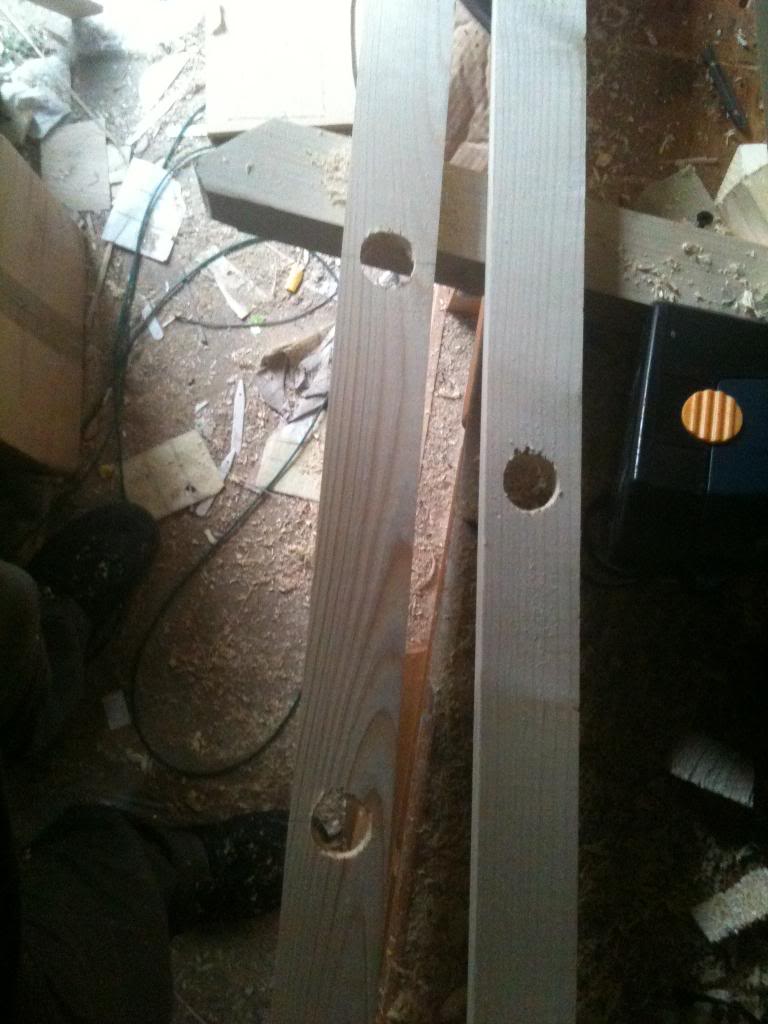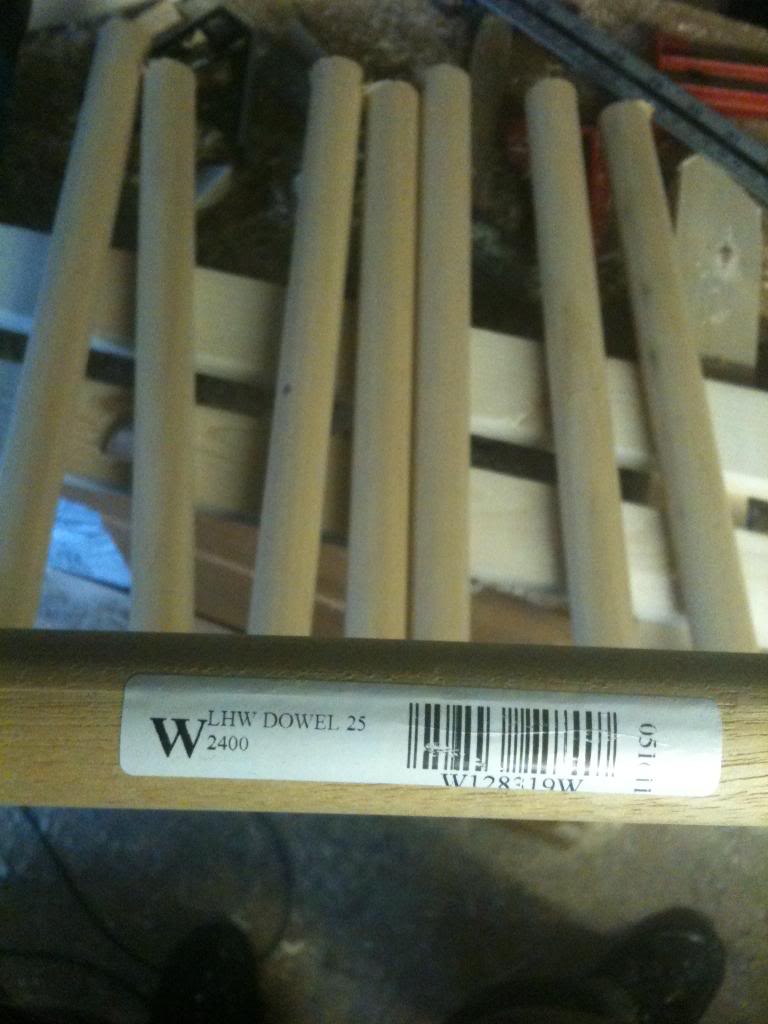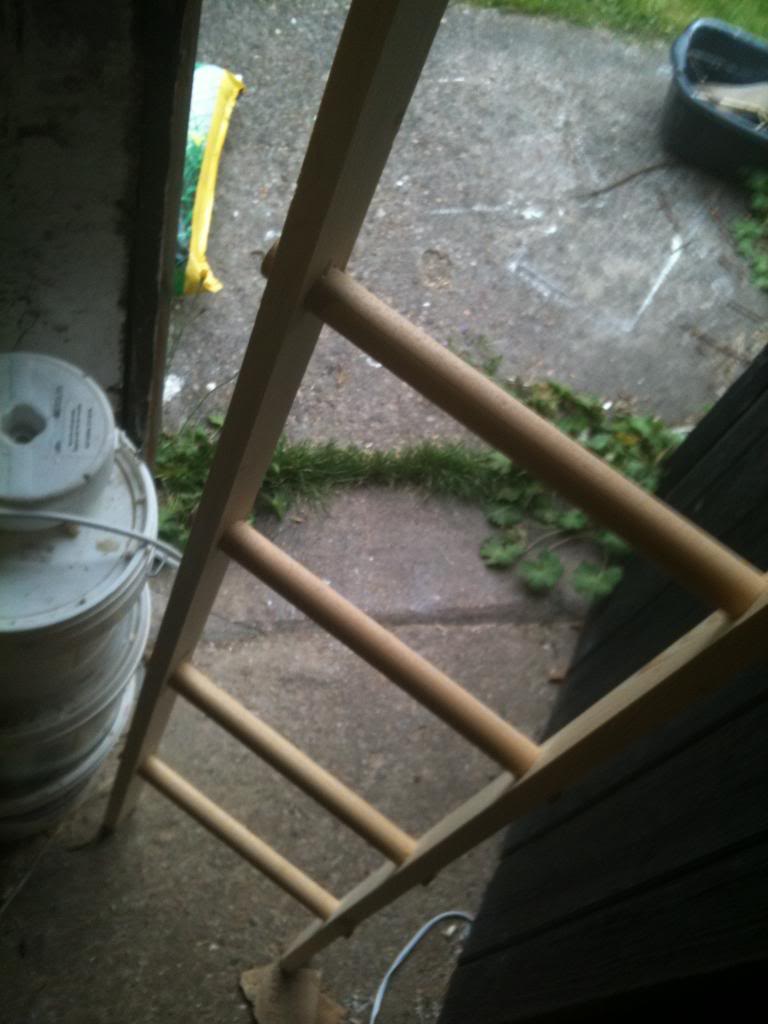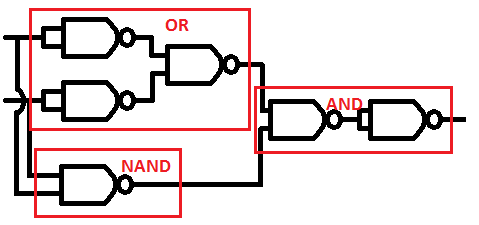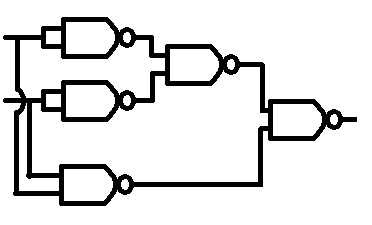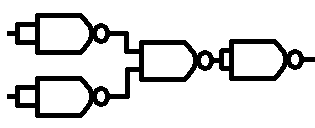The basic structure is a ladder, it leans against the wall much like any other ladder and you hang towels onto it.
It clearly will not take the weight of a person, this is definitely not a climbing ladder. you'd use a simillar process to make a climbing ladder, but thicker rails, or pre-stressed timber (not roofing baton). and look for a stronger material to make the rungs from.
Anyway.
Start by taking a length of baton that is around 6ft in length (72 inches) mark your first rung 11" from the end, then mark at 10" intervals down the length of the wood, making 6 steps on your ladder.
finally using a 5mm drill make pilot holes in the centre of the ladder rails.
Once your pilot holes have been drilled through the ladder rails, expand the holes with a 25mm flat blade bit, (or auger bit), drill half way through the ladder rail making a cup.
Once you have completed this step turn the rails over and drill from the other side to make the hole go the entire way through the ladder rail. drilling from both sides like this ensures that the outside faces have clean cuts made by the drill bit and that there is minimal splintering.
Take a length of 25mm diameter dowel, and cut into lengths as wide as you wish your ladder to be.
for a rail holding bath towels you may wish to make the ladder wide so that the towels are not scrunched up ,for a ladder made to hold tea towels you may wish to make the ladder narrow so that you don't loose too much kitchen space.
Coat the inside of the holes in the ladder rail with a PVA wood glue, and insert the rungs into the ladder rails.
to help set the distance it can be handy to use a straight length of wood that your rungs will butt against, then a few spacer blocks to hold the rails away from the straight edge.
Wipe excess glue from the ends of the rungs and wait for the glue to dry.
Finishing is optional, but can include
Natuaral finish, (no finish)
Varnish, wax, paint etc. You should chose the finish most appropriate for your needs.
